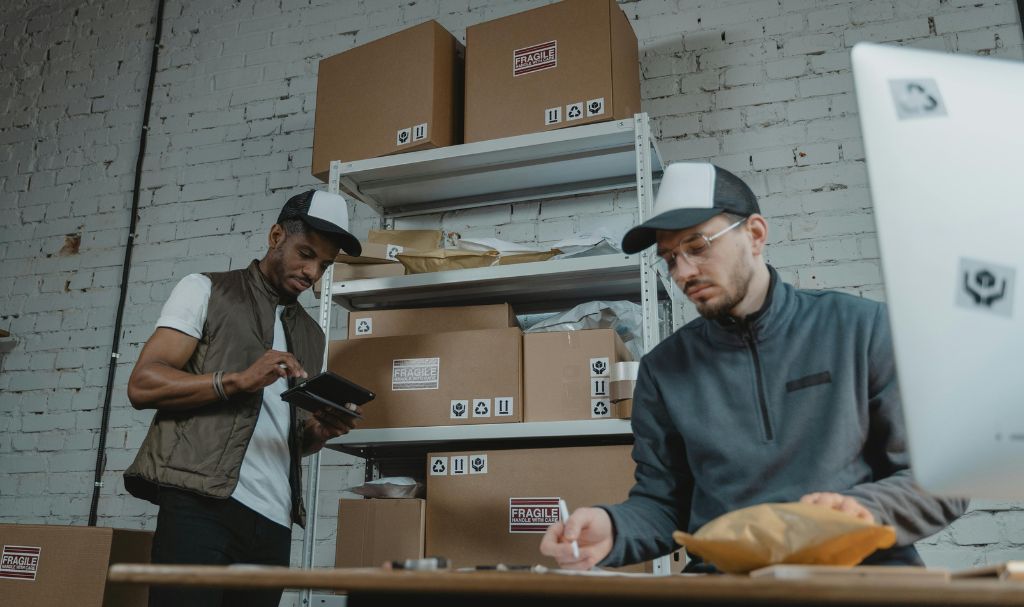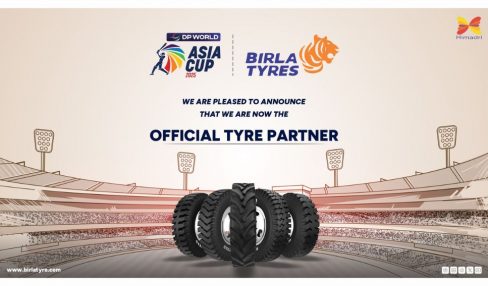What Growing Brands Should Know About Third-Party Order Fulfillment in 2025
21 May 2025
5 Mins Read

- Why Third-Party Order Fulfillment in 2025 is Essential for Growing Brands
- Why is Third-Party Fulfillment in 2025 So Beneficial?
- 1. Scalable operations to match business growth
- 2. Improved delivery speed at optimized costs
- 3. Access to advanced tech-driven fulfillment solutions
- 4. Enhanced customer experience and satisfaction
- Emerging Trends in Third-Party Fulfillment Services in 2025
- 1. Data-driven decision-making for efficiency
- 2. Sustainable fulfillment practices with measurable impact
- 3. Omnichannel and marketplace integration
- Is This The Right 3PL Partner for Me?
- 1. Evaluate fulfillment capabilities and scalability
- 2. Assess technology integration and reporting tools
- 3. Consider geographic reach and cross-border potential
Brands in E-commerce face constant challenges with order fulfillment. Despite businesses expanding, E-Commerce brands find it difficult to manage inventory, shipping, and delivery.
Companies struggle to deliver at par with the growing demands; hence, satisfying the client has become difficult.
The experts suggest that the third party order fulfillment providers are going to play a key role in the year 2025 in fixing this gap in the supply chain.
Third-party order fulfillment in 2025 will play a key role in making logistics more efficient without degrading the quality.
This article covers the key advantages and trends that are shaping the industry.
Read till the end to make informed decisions for your organization.
Why Third-Party Order Fulfillment in 2025 is Essential for Growing Brands

Growing brands can often be challenging, as the orders increase, it becomes difficult to satisfy the demands. In such a scenario, third-party order fulfillment in 2025 brings necessary resources.
These resources are helping the brand manage its orders with ease and convenience.
Businesses now outsource logistics as it helps them focus more on e-commerce, as they can execute better delivery strategies while leveraging dependable logistics.
Third-party logistics (3PL) partners help brands in the process of better execution in several ways. This includes AI automation and inventory management tools.
AI automation and inventory management tools, and other technologies, help in achieving accuracy in order processing. Hence, it helps to minimize errors in shipping or managing warehouses.
Third-party order Fulfillment in 2025 helps with better last-mile delivery options. So, businesses can now dodge the high operational costs. However, this does not affect client satisfaction, as deliveries happen quickly.
Why is Third-Party Fulfillment in 2025 So Beneficial?
Third-Party Order Fulfillment in 2025 helps businesses manage rapid order growth while maintaining efficiency.
The brands largely focus on more crucial activities like promotion and market expansion, while third-party order fulfillment takes away the tasks of logistics.
1. Scalable operations to match business growth
Expanding brands require a proper support system to back up the growth being achieved. Third-party logistics suppliers help handle order volumes during surges in orders.
Third-party logistics suppliers maintain a steady supply chain to help the brands deliver their orders while saving costs.
They manage warehouse space and labor effectively, helping businesses avoid over-committing resources.
Third-party Logistics Suppliers also help with multi-channel sales strategies for e-commerce and retail brands.
Businesses now grow without interruption, as there are third-party service providers who swiftly respond to the demand spikes and market changes.
2. Improved delivery speed at optimized costs
Third-Party Order Fulfillment in 2025 helps businesses improve delivery without maintaining costly logistics. While relying on the extensive networks and the massive inventories, they make logistics easy and cost-effective.
This decreases transit time and enhances last-mile delivery efficiency, addressing growing consumer demands for quick shipping.
Modern logistics technologies, such as route planning tools and AI-based systems, assist in cutting fuel costs and delays. Companies save on transportation expenses while maintaining dependable service.
Outsourcing also removes the need for expensive in-house fleets or extra staffing during peak periods.
3. Access to advanced tech-driven fulfillment solutions
Advanced logistics technologies like AI and automation enhance order precision and inventory oversight.
Intelligent systems analyze data in real-time to forecast demand and restock effectively, which minimizes delays and shortages.
Warehouses equipped with robotic picking systems accelerate fulfillment processes while reducing labor expenses.
“Automation increases efficiency while maintaining quality,” say logistics industry experts.
4. Enhanced customer experience and satisfaction
A third party helps in the fulfillment of an order to ensure that businesses meet the customers’ expectations concerning quick and precise deliveries.
Experienced logistics partners minimize mistakes in shipping time and the condition in which the product arrives at the customer’s doorstep.
An e-commerce customer wants reliable service and simple processes. Skilled 3PLs have hassle-free returns, real-time tracking updates, and quality packaging.
This builds trust, which eventually turns into long-term loyalty from buyers.
Emerging Trends in Third-Party Fulfillment Services in 2025
The fulfillment industry in 2025 prioritizes smarter decision-making driven by data. Companies also focus more on eco-friendly practices to meet growing customer expectations.
1. Data-driven decision-making for efficiency
Businesses can use data analytics to forecast demand and manage inventory more effectively. Tracking sales trends helps prevent overstocking or shortages, keeping costs under control.
AI tools in order fulfillment provide real-time insights into delivery performance and warehouse operations.
These systems help businesses adjust quickly to delays, improving overall efficiency in the supply chain.
2. Sustainable fulfillment practices with measurable impact
Green supply shows how to give orders in a way that helps the earth by cutting waste, energy use, and carbon emissions.
Many outside helpers now use green wrapping and smart ways to move goods to cut harm to the environment.
Some storage places add sources of power that can be used again, like solar panels or employ electric delivery trucks for final mile shipping.
Brands can track these efforts through clear metrics like a reduction in CO2 per shipment or fewer materials in the packaging. E-commerce businesses win by cutting operational costs while winning over eco-friendly customers.
This aligns with bigger trends that want more fact-based solutions in 2025 fulfillment services.
3. Omnichannel and marketplace integration
Omnichannel integration allows businesses to link the following:
- Inventory
- Shipping
- Fulfillment across physical stores
- E-commerce platforms
- Third-party marketplaces
This approach ensures a uniform shopping experience for customers while enhancing order accuracy and delivery timelines.
Marketplace integration assists brands in broadening their reach by connecting them to platforms like Amazon or Walmart.
By employing third-party logistics services with marketplace compatibility, companies can handle orders from multiple sources without increasing difficulty.
These tools help minimize errors, simplify operations, and prepare businesses for international expansion opportunities.
Is This The Right 3PL Partner for Me?
Keep these practical tips in mind to choose the right 3PL partner.
1. Evaluate fulfillment capabilities and scalability
Assess current order volumes and future growth projections. Ensure the third-party logistics partner can manage peak seasons without delays or errors.
Ask about their ability to handle sudden increases in demand for e-commerce brands. Verify the adaptability of their processes, including storage and shipping options. Confirm they have resources like warehouses and staff to expand alongside your business.
2. Assess technology integration and reporting tools
Evaluate the logistics provider’s systems for compatibility with your existing e-commerce platforms. Ensure their tools allow smooth order processing, inventory management, and real-time tracking. Businesses benefit from analytics that provide clear visibility into supply chain performance.
Choose fulfillment partners offering detailed reporting features to monitor statistics such as delivery times, stock levels, and returns.
Technology-focused tools reduce manual errors and strengthen operational control.
3. Consider geographic reach and cross-border potential
Expand fulfillment operations to cover regions where demand is highest. Collaborate with a logistics provider that ensures dependable cross-border shipping to minimize delays for international customers.
Prioritize providers with worldwide networks and expertise in managing customs processes. Seek solutions capable of managing growing demands while maintaining precise delivery tracking across countries.



















Comments Are Closed For This Article